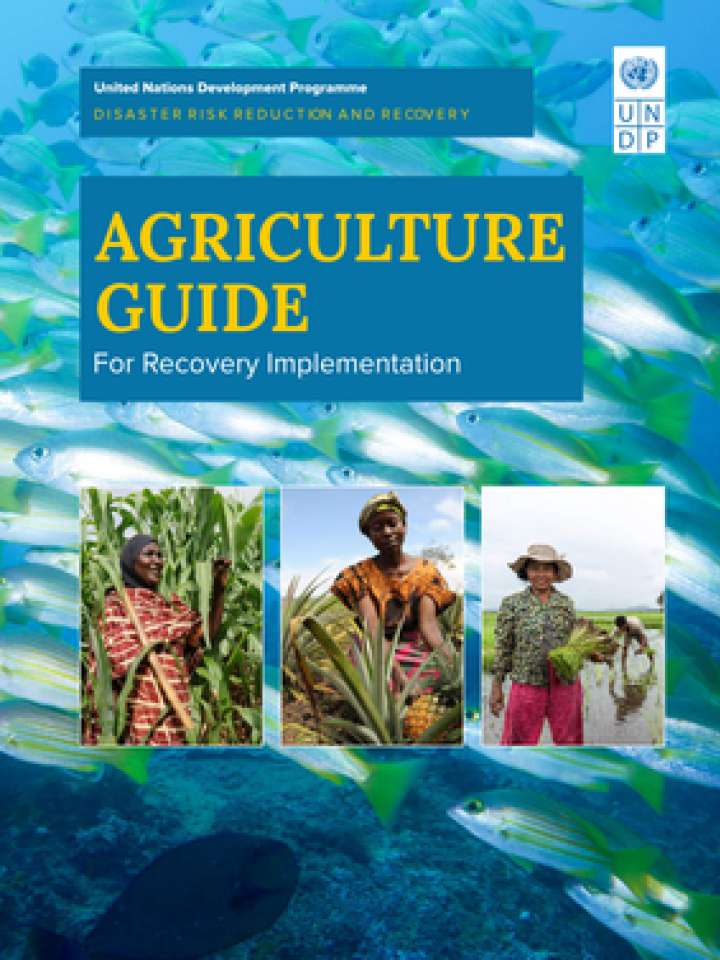Agriculture guide for recovery implementation
The guide describes the role of agriculture in a country’s development and the potential impact that natural disasters can have on the sector. It recommends the types of agriculture interventions to be implemented in the short-, medium- and long-term stages of recovery and reconstruction taking into consideration DRR and BBB aspects.
It then highlights global best practices in post-shock recovery programming that can help address increasing vulnerability of agri-food systems and livelihoods to growing weather, water, climate, and other risks. It guides in the implementation of appropriate and timely actions by governments, supported by their development partners, that can aid not only the near-term, post-shock recovery of agri-food systems and rural livelihoods, but also can contribute to strengthening their resilience by aligning actions with mitigation investments over the medium to long term.
In this guide, agriculture refers to the four subsectors—crop, livestock, fisheries/aquaculture and forestry. It refers to natural disasters originated from i) hydrometeorological hazards (floods, waves and surges, storms, droughts, etc.), ii) geological hazards (earthquakes, volcanic eruptions, etc.) and iii) biological hazards (epidemics, insect infestations, animal disease outbreaks, etc.), including those happening in a conflict context and looks at interventions to be implemented along the food system.
